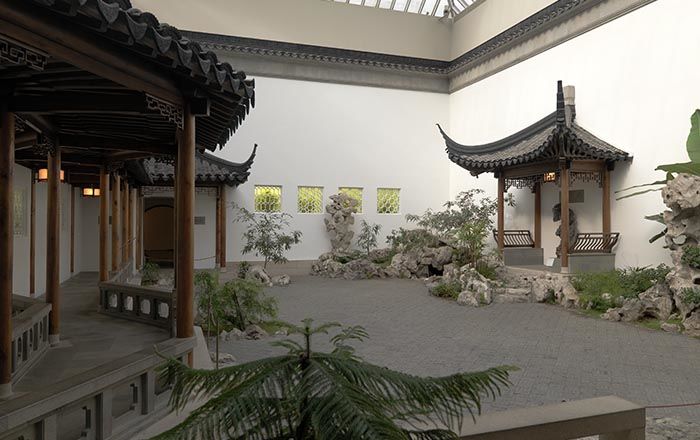Portable Chest (Hasami-bako) with Paulownia Crests
Not on view
This portable shoulder box was primarily used by samurai, who would have their retainers carry it during official processions, castle visits, or other outings. The black-lacquered, lightweight wooden box is embellished with stylized paulownia flowers, the family crest associated with Toyotomi Hideyoshi. It was used to carry changes of clothing or armor. It has metal brackets on its long sides, through which a carrying pole would be passed so it could be carried on the shoulder. One of the representative maki-e (sprinkled gold powder decoration) styles of the Momoyama period, Kōdaiji maki-e derives its name from the distinctive designs and techniques used in the maki-e decorations found in the mausoleum (tamaya) of Kyoto’s Kōdaiji temple, which enshrines Toyotomi Hideyoshi and his wife, Kōdai-in (also known as Nene). It also refers to the lacquer furnishings cherished by the couple—many of which now are designated Important Cultural Properties—housed in the same temple.
By the late sixteenth century, Kyoto had become the preeminent center for lacquer art, and Hideyoshi’s distinctive tastes profoundly influenced the development of maki-e decoration. He harnessed the opulence of gold and silver lacquer to assert his authority, commissioning maki-e embellishment on large-scale furnishings, household items, and architectural elements—objects that had rarely received such lavish treatment. This extravagant aesthetic came to be known as the Kōdaiji style, named after the Kyoto temple dedicated to Hideyoshi and his wife, Nene.
Characterized by the simplification of traditional maki-e processes, the Kōdaiji style employed a combination of a few relatively straightforward techniques. This allowed artisans to produce bold, innovative designs without relying on detailed underdrawings, resulting in a flamboyant visual language that embodied the ambition and audacity of its time.
